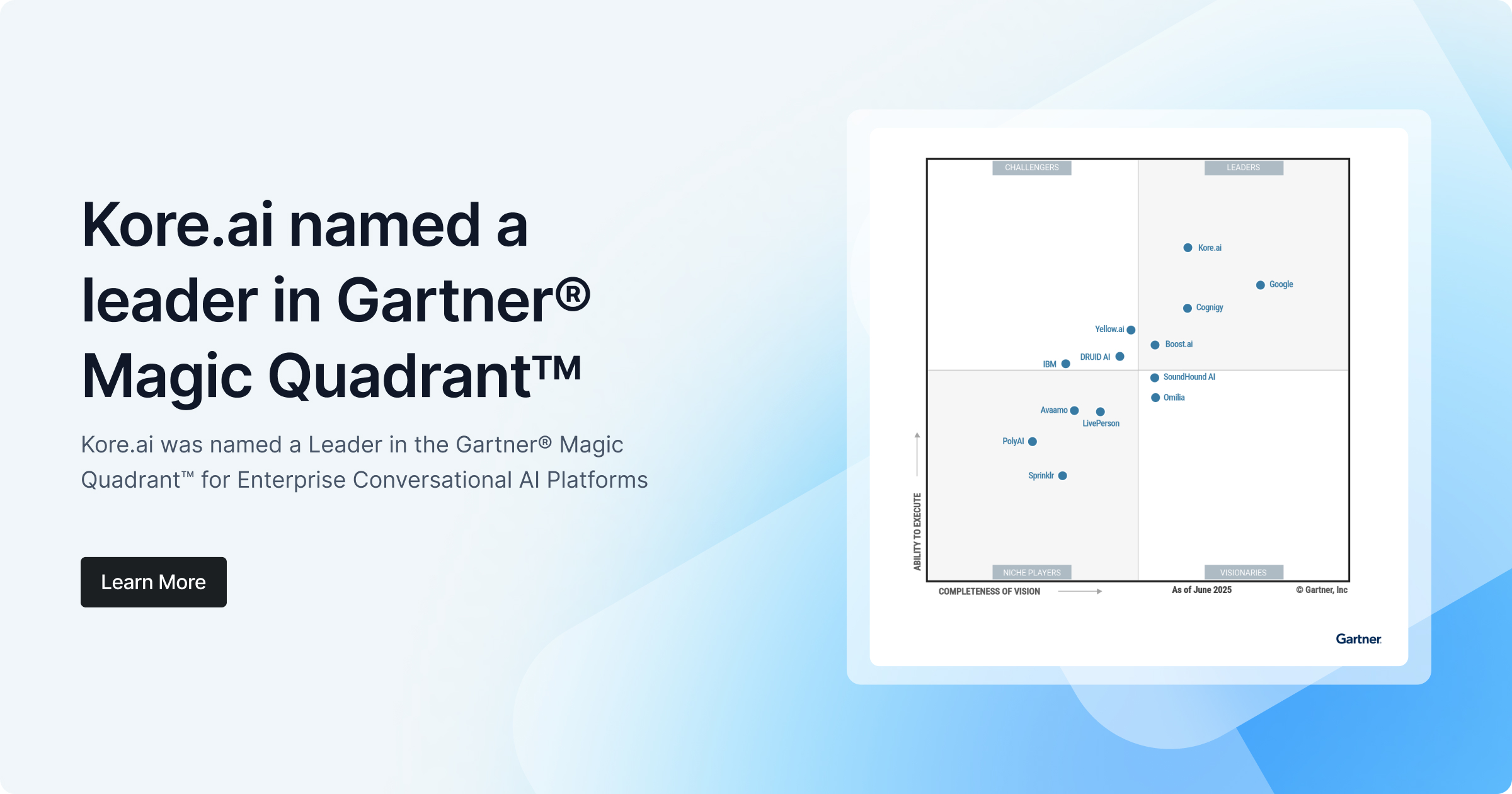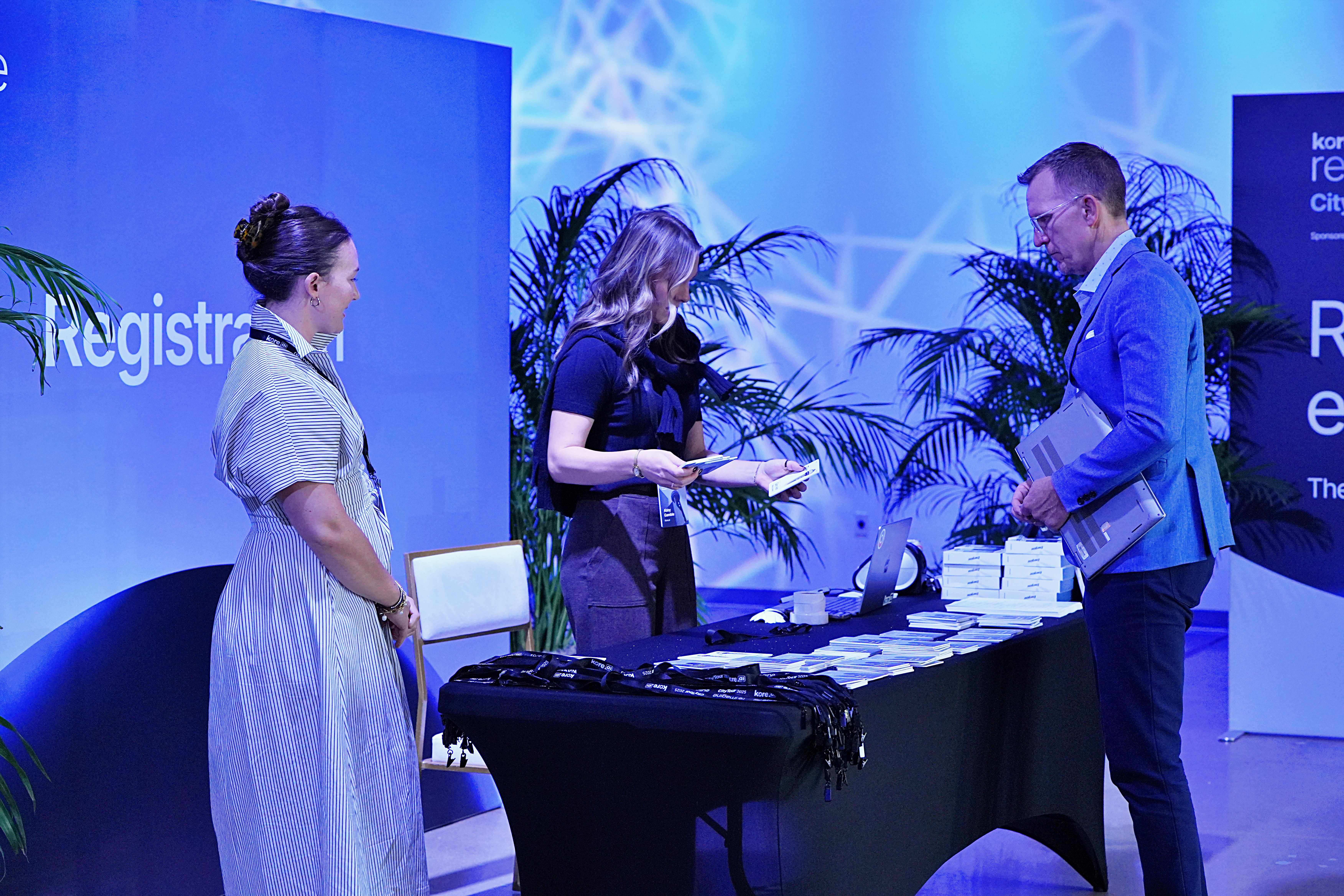The enterprise world is abuzz with the activity of AI-powered chatbots. They are all over the place – helping IT agents resolve tickets, enabling 24/7 customer service, improving productivity – and demonstrating their potential in turning around business functions.
It’s tough to be a pioneering conversational AI provider, but Kore.ai is always known to surprise. We anticipate the needs that the market may not yet have expressed, and accordingly bring in new features, or upgrade the existing ones on our chatbots platform. Kore.ai strives to create intelligent enterprises by simplifying and accelerating their conversational AI journey.
Our latest release 6.3.0 includes the following enhancements that make Kore.ai Bots Platform more open and extensible while streamlining elements of the bot development life cycle.
Granular control over bot and task publishing process
We have introduced a feature, which allows a developer to have control over publishing bot updates to the end user. This makes the small task of a tedious job. With granular control over bot and task publishing, all that developers have to do is just ask the Bot Admin to publish bot updates to the end user – by simply clicking a button. As opposed to all changes made by developers to bot settings getting published without a layer of review, the Bots Platform 6.3 comes with ‘maker-checker’ functionality, where changes made at a granular level to the bot settings by the bot developer, are checked, reviewed and published by the Bot Admin.
Example: This is analogous to the moderator of a social network page, such as a Facebook group, controlling the roles and their respective permissions at a granular level. If a regular member of the group wishes to post something, the Admin reviews and approves it prior to publishing it.
Also Read: Kore.ai Virtual Assistant Platform Release 7.3. We Got What You Asked For! |
Public access to platform APIs
Developers have much better access to and can perform bot level management with public access to platform APIs via JSON Web Token (JWT). The platform is now more open and extensible than ever before.
The new set of APIs allows:
-
Developers to import and export bot definition, dialog definition, Knowledge Graph, and machine learning utterances.
-
Enables developers to trigger bot training and assign developers with bot roles using the APIs.
-
Platform users to follow the enterprise release management process as APIs for DevOps management have been exposed.
In short, developers can now expose APIs to a public domain, to help other developers import, export bot definitions, extract knowledge graphs from Kore.ai platform, reuse them, and connect it to the chatbot platform architecture natively available at the client site.
Additional language support
Kore.ai bots have already made effort in supporting nine languages, now bots can be created and published in Japanese, Korean, Arabic, Dutch and Bahasa. And with the new upgrade, the utterances can be trained in native languages.
Knowledge extraction service (Beta)
The Kore.ai Knowledge Task now comes with an advanced feature in its Beta stage. It does away with the need for a developer to manually add questions and answers in the Knowledge Graph within the bots platform. Instead, the platform can now crawl through web pages and documents (HTML, XML, PDF, Word) and extract FAQ sets, which are then uploaded as a CSV file. This saves time and boosts efficiency by automating the upload of FAQs to the Knowledge Graph.
Triggering intents based on external events
This feature improves the overall experience of the platform as users can invoke intents or custom responses based on a defined list of platform or channel-specific events (as against just text or voice prompts from users).
When a user clicks the ‘Get Started’ button to initiate a chat with FB Messenger bot, it triggers the Facebook Welcome event (or), if a task ends, developers can trigger the ‘Task Completion’ event dialog. This can be used to capture feedback or update a backend system at the end of any dialog.
Example
Use Case: A consumer-facing bot would initiate a conversation with a user, provided certain conditions (pre-defined by the bot developer) are met, such as ‘clicking on the URL of a shoes Ad’ on a webpage. This ‘event’ of clicking on that URL is the ‘trigger’ that invokes the bot to talk to the user.
.jpg?width=600&name=Bot%20Platform_V.6.0%20(2).jpg)
Also Read: Kore ai Virtual Assistant Platform v7.2 : Design and Build Conversational Experiences That Matter |
Custom authentication support
Developers can implement custom authentication for their bot by providing URL from the service node to an external application that manages the authentication. The platform provides the necessary functionality to handle successful and failed authentication scenarios and manage the corresponding task flows.
The new feature improves the native payment experience, allowing people to do the transaction through channels such as FB messenger.
Example: Online banking transactions (The below illustration explains how the user is redirected from the messenger page to bank login page.)
.jpg?width=600&name=Bot%20Platform_V.6.0%20(3).jpg)
Ability to export information from bot analyze
The bot analyze tab is helpful in pulling out bot metrics, such as how many users accessed the bot, how many times the bot successfully resolved a query, the number of times a particular intent was chosen by the user etc., capturing them into a CSV file. The download includes the information present on the selected tab as well as the detailed analysis based on the selected filters. This feature helps provide more detailed bot metrics for developers to track user behavior better.
Introducing status dock to track training and exports
Bot builder now has a new UI component that keeps a track of all asynchronous jobs like training and export. Once the job is completed, the dock will show the status and provide an ability to download the file or report.
Control over smart bot - child bot upgrades
With this upgrade, the developers of child bot can selectively publish upgrades on the inherited bots, thus removing the limitation of the published version of inherited bot upgrades without developer and Admin approval. Developers will now have better control over what features will be published in the child bots even as upgrades are done in the Smart Bot.
Invoking dialog tasks from FAQ responses
The Knowledge Graph now allows developers to link a Dialog task as a response to an FAQ. It helps bot developers to leverage the capabilities of the Knowledge Graph and Dialog tasks to handle FAQs that involve complex conversations. This is a more proactive way of managing complex conversations.
Batch testing upgrade
Batch testing capability in the platform is now enhanced with an ability to test for sub-intents within the dialog and test entity detection within the user utterances.
Also Read: Kore.ai Bots Platform Version 7.1 unveils Developer and User Friendly Features |
IVR enhancements
- Maximum No Inputs / No Match scenario - Instead of terminating the call, developers are given options to configure the behavior. They can choose to either initiate call termination or initiate a dialog task or jump to a specific node in the current task.
- Creating Instance-Specific VXML Properties - Ability to create VXML properties at the node, standard response, and welcome message levels. These properties would be instance-specific and aren’t accessible from the global VXML properties.
NLP thresholds - ability to modify ML engine parameters
The ML parameters used to identify user intent against the utterance can be controlled via the NLP thresholds allowing developers to define the NLP engine capability based on use case.
Bot Analyze upgrade
Additional information added as part of the Analyze module to list the scenarios where the intent was identified and task failed to complete due to platform/bot configuration issues like incorrect Javascript, failure to resolve custom bot message and many more.
In addition, we have a host of minor enhancements and bug fixes included in this release. For detailed information related to Kore.ai Platform v6.3.0 release, refer product documentation.
If you have any feedback, ideas for new features, or if you wish to see a demo of our platform, please write to us at info@kore.com.











